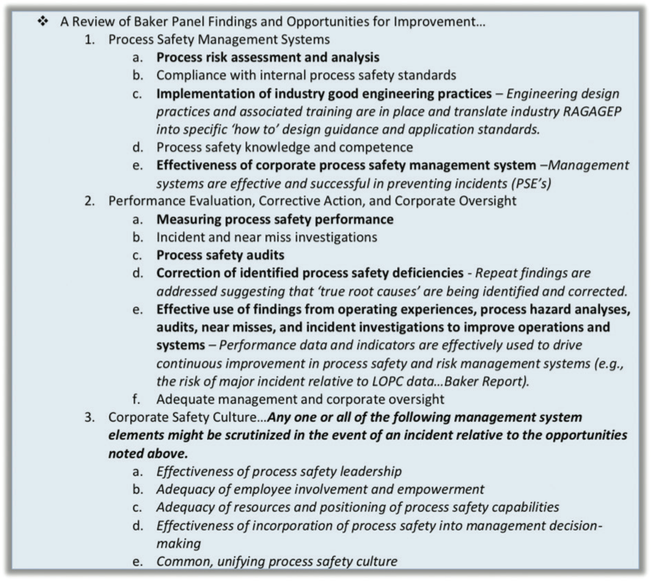Introduction
This paper identifies the attributes and benefits of a data and metrics-driven management system focused on process safety design integrity and reliability relative to loss of primary containment (LOC). This management system process focuses on the four key business drivers of risk (i.e. regulatory compliance, operations, and profits), and involves several distinct business methods involving people, processes, and tools/technology. At the center of the management system is the unique design and implementation of metrics and KPIs created from data lifted and aggregated from an enterprise asset management platform (EAM). Also key to this approach are a time-tested refining incident and loss (lost profit opportunity [LPO]) database and performance trending methodology.
LOC is preventable, and equipment reliability relative to process safety is by far the leading risk opportunity and ongoing business concern facing the oil & gas industry today. An LOC focused, metrics-driven management system would provide a more robust program for facilitating comprehensive process design and engineering relative to reliability improvement (i.e., “safety by design”). So what follows here is the who, what, when, where, and how of an LOC focused, metrics-driven management system and LPO asset optimization database tool which, when properly deployed together, can drive improvement in operations, reliability, profitability, and, most importantly, process safety (as an intended, or unintended consequence of the profit motive).
The Current Regulatory Climate
The highly publicized incidents at BP Texas City in 2005, Tesoro Anacortes in 2010, and Chevron Richmond in 2012 were not due to a failure of equipment, instrumentation, facility siting, operator, procedure, communication, supervision, or training. Rather, these incidents occurred because of a failure of all those things together (i.e., a management system failure).
The BP, Tesoro, and Chevron incidents are now driving the re-examination of the PSM rule by the U.S. regulatory community. The U.S. Chemical Safety Board (CSB) has noticed that U.S. oil & gas industry losses are highest among any industrial sector, and that the U.S, refining industry accident rate is 3 to 4 times higher than in Europe.
The PSM rule and its allegedly “less rigorous regulatory framework” are quickly falling out of favor with regulators. As such, the attributes of the “Safety Case” and ALARP (as low as reasonably practicable) regulatory regime currently in use throughout the United Kingdom, Australia, and Norway are now being advocated by the CSB. And even more notable, is California’s 2014 proposed regulation for inherently safer design (ISD), an initiative which was endorsed by then-CSB chairman Dr. Moure-Eraso, with him suggesting that other states should do the same.
ISD has been hotly debated for years, and requires that risk be reduced to the greatest extent possible through selecting and implementing changes in chemistry, materials, and/or process variables (e.g., reduction in pressure, temperature, flows, etc.). Unmistakably, this would be taking the petrochemical industry and its PSM process safety approach from performance-based to prescriptive.
Yet, before opting to prescriptively rewrite the PSM rule, I suggest a performance-based option that is more sensible, productive, and achievable in the short term; one that is a focused, metrics-driven management systems approach. Such an approach would also embody the core principles of the PSM rule and would be consistent with the findings and recommendations of the 2007 Baker Panel Report (Figure 1).

It would seem that the Baker Report is prompting us to revisit the PSM rule for intent and direction, as well as the proper administration of the PSM rule (i.e., the effective application of a management systems approach to continuously improve our process safety environment and culture). After all, the authors of PSM took great pains to make it a performance-based standard for a reason, so let us not give-up on that now.

















Comments and Discussion
Add a Comment
Please log in or register to participate in comments and discussions.